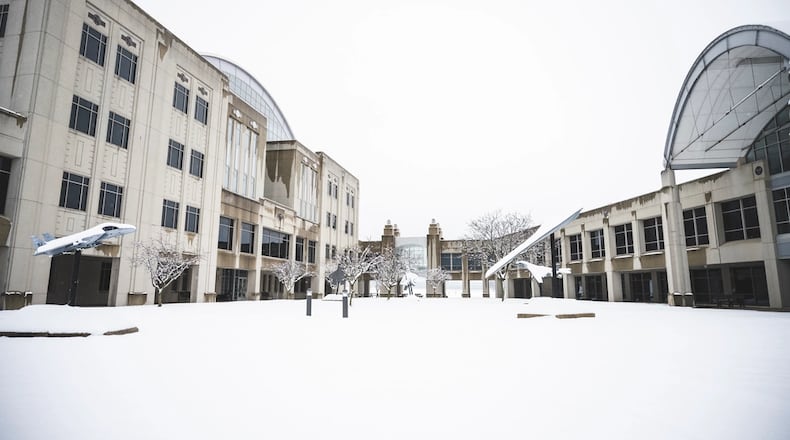“There is no partisanship in the understanding that top acquisition activities are critical for national defense,” Gessel said in an interview Friday. “That’s not a partisan issue.”
The current plan calls for a 214,200-square-foot building at Wright-Patterson, at a cost of about $200 million, he said. Those numbers can change as the plan develops, he added.
On Thursday, U.S. Rep. Mike Turner, R-Dayton, said $9.9 million for planning and design of a new “Acquisition Management Complex” at Wright-Patterson has been included in the House’s version of the latest defense budget.
“This building represents the future of acquisition work at Wright-Patterson,” said Jeff Hoagland, president and chief executive for the coalition. “It has been a community priority for more than a decade. It replaces outdated workspace with a critically needed modern, secure, and flexible facility that will improve the way the Air Force develops weapon systems. It’s a game changer for the base.”
In terms of dollar value, the stage is set for an investment greater than the investment made in the new NASIC (National Air and Space Intelligence Center) building, also at Wright-Patterson, which was $153 million. Ground was broken for that complex in late 2020.
However, Gessel cautioned against attempting to make an apples-to-apples comparison between the buildings. The NASIC and AFLCMC workforces each have their own unique requirements.
AFLCMC is responsible for the development and sustainment of Air Force weapons and equipment, from cradle to retirement. The center’s motto: “If Airmen fly it, fuel it, transport it, drive it, wear it, shelter in it, communicate with it or drop it on targets, AFLCMC provides it.”
The work of updating facilities for the acquisition enterprise workforce at Wright-Patterson dates back to the 1980s. Gessel said each phase aimed at a modern, secure, functional series of buildings for acquisition workers.
There were at times multiple steps within each phase. But they involved different aspects of the acquisition process at the base, through administration requests and congressional add-ons.
This particular building would be the biggest of the complex, if it happens, Gessel said..
According to the latest timeline for the project, the Biden administration plan is to go forward with construction in fiscal year 2027.
“With the insertion of the congressional planning and design money, that moves the plan up,” Gessel said.
He was unable to say what the total investment into housing the acquisition enterprise at Wright-Patterson since the 1980s has been. But since the early 2000s, the value “has not been great,” he said.
The Senate version of the NDAA puts about $18 million into the project.
About the Author

